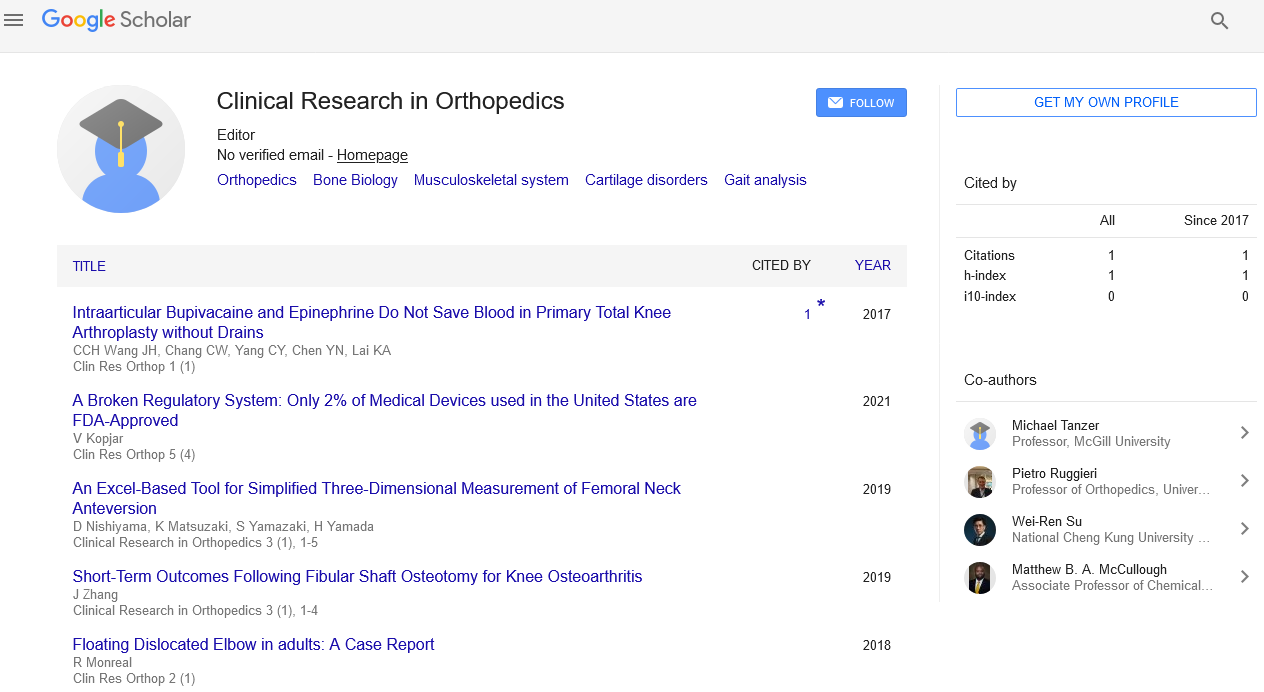Functional evaluation of plate fixation for displaced mid-shaft clavicle fractures
Gaurav Maddheshiya
Nims Medical College Jaipur, India
: Clin Res Orthop
Abstract
Clavicle fracture account for 2.6% of all fractures. >75% of these are midshaft fracture. Overlapping in multiple fragment fracture result in shortening of the shoulder girdle at the fracture site which leads to poor cosmetic and functional result. Classification of Clavicle Fractures: Group I: Middle third- Most common (80% of clavicle fractures), Group II: Distal third- 10-15% of clavicle injuries, Group III: Medial third-Least common (approx. 5%). Rockwood & Green's Fractures in Adults- As anyone who has treated this injury is aware, discussion of universal healing rates after clavicular fracture is overly optimistic. Recently, investigators have discovered that union after midshaft clavicle fracture is not as universal as once thought. Moreover, certain types of clavicular fractures have declared themselves to be problematic. Finally, there has been newfound interest in the treatment of problem fractures and nonunion. Recent data based on detailed classification suggests that incidence of nonunion in displaced clavicle fractures is between 10-15% Brinker MR, Edwards TB, and O’Connor DP. The risk of nonunion following nonoperative treatment of a clavicular fracture is estimated. Malunion with shortening & rotational deformity can be debilitating for the patients and challenging for the surgeon as it does not remodel in adults.
Biography
Gaurav Kumar Maddheshiya has completed DNB Orthopedic Surgery and he is a specialist in Orthopedic Field in the institution of National institute of medical science, Jaipur. He has been awarded and certified by different National and International journals. His field of interest includes Pain Management and fluid therapy.
E-mail: maddheshiya.gaurav@gmail.com
 Spanish
Spanish  Chinese
Chinese  Russian
Russian  German
German  French
French  Japanese
Japanese  Portuguese
Portuguese  Hindi
Hindi 